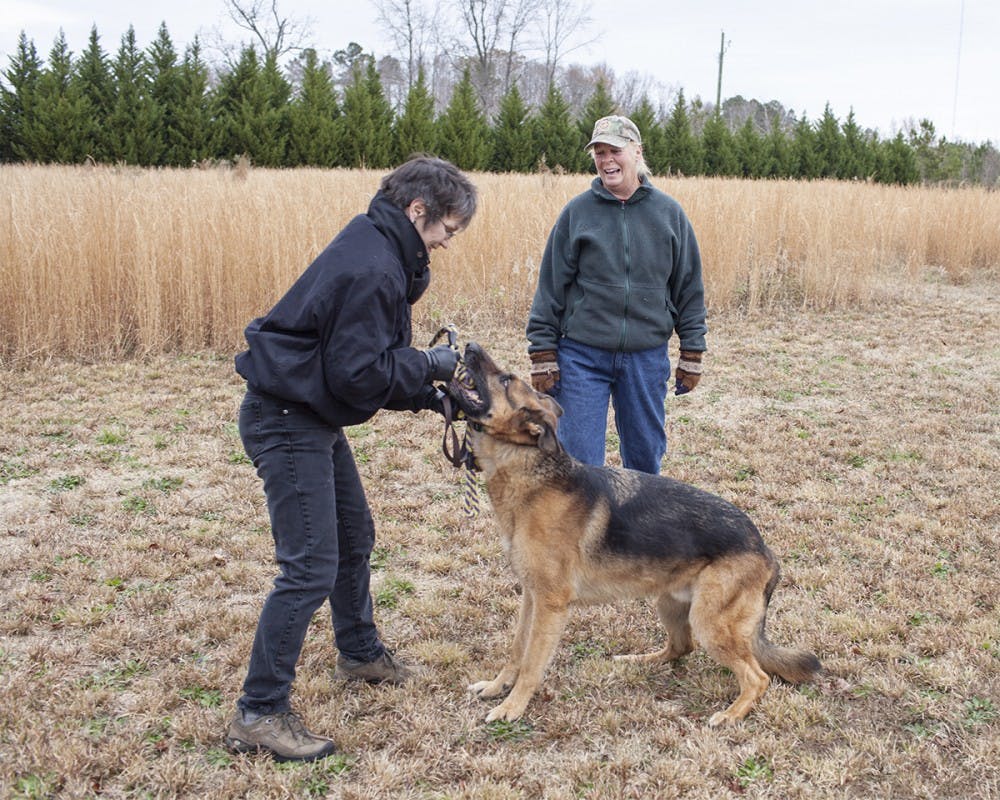Cat Warren, an English professor at N.C. State University, will be reading from her book, “What the Dog Knows: The Science and Wonder of Working Dogs,” today at Flyleaf Books. Warren has been working with her German Shepherd, Solo, for 8 years as a cadaver dog, whose job is to find people who have been reported missing and are often dead.
Warren spoke with Arts Editor Josephine Yurcaba about how she became involved in the world of working dogs and why she is so interested in the subject.
DTH: How did you get involved with working dogs?
Cat Warren: I got involved quite accidentally when I started training my then 5-month-old pup as a cadaver dog. So I simply took him to a trainer because I was trying to find something for him to do — he had a lot of what people call drive — he was really a little hellion. So this trainer suggested that I might try him as a cadaver dog and it was an odd long shot, but it was started working with him and it was really compelling, even fun work. That’s what I ended up doing with him.
DTH: How did the your first search with Solo go?
CW: Well, I can’t talk about cases. So, because they are police cases, so they are confidential. I talk about Solo’s work (in the book) and then I talk about other dogs’ work. Nine times out of 10 you don’t find anything. You’re actually trying to clear areas to make sure that there’s nothing there. You don’t necessarily go out thinking, ‘I’m going to find somebody’ or ‘I’m going to find part of somebody.’ That’s remained the case. 99 percent of searches end up being what are called negative searches.
DTH: When did you have the idea that you wanted to write a book about this?
*CW: Solo had turned 6 years old and I had been working with him for several years and it’s only about 20 percent memoir and the rest of it is science reporting and reporting on other trainers and handlers and the history and science. But it really was that I was getting more and more involved and enamored of the world of working dog and enjoying working with really experienced K-9 handlers, watching military handlers occasionally. I realized that it was a world that I wanted to tell about because I think that a lot of people have this kind of magical version of dogs being perfect and self-trained and never being wrong. The dog is (the) hero, and what was I seeing out there instead is it is really hard work and the dog and the people were teams.
But it took this amazing team work with the very best handlers and dogs and usually with really good trainers behind them, and then pretty constant training and upkeep and challenges. I’m new to this world, so I had both an insider-outsider perspective. I was working with my very first dog, this is a really serious hobby for me, but I don’t do it full time. I was learning as I went along. It was a combination of thinking, ‘I want to capture Solo while he’s still at the height of his abilities.’ And I really like him. He’s a funny, powerful, interesting dog with a good nose. And I also realized that I wanted to write about some of the things that I was learning along the way. I’m a former newspaper reporter, so part of that just appealed greatly.




